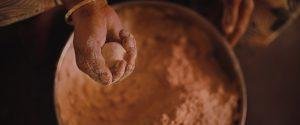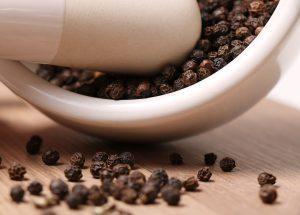Roti made on a direct Gas flame can cause cancer?
Roti, or phulka, holds a special place in Indian cuisine, gracing our plates during every mealtime. As women who value both tradition and well-being, it’s important to understand the nuances of cooking this beloved staple over a gas flame.
Recent studies have brought to light an intriguing fact: high-temperature cooking methods, such as the classic direct flame roasting, may give rise to harmful compounds like heterocyclic amines (HCAs) and polycyclic aromatic hydrocarbons (PAHs), which have been associated with increased cancer risk.
But fret not! I am here to empower you with knowledge. Join me on this enlightening journey as we uncover the right way to prepare roti, ensuring that we prioritise our health without compromising on taste.
Discover alternative cooking techniques, clever tips, and innovative recipes that let you relish the flame-puffed perfection of roti while maintaining a mindful approach to your well-being.

What is Garavisha and what’s its connection with Roti made on a Gas flame?
Now, let’s understand “Garavisha.”
Gara comes from the root word “Gri” which means something diluted or reduced in its powers. Visha is a word for a “poison”. So, Garavisha in itself is not a very strong or potent poison.
It’s can be a combination of two things that may or may not be poisonous on their own. But when you put them together, they become a sneaky troublemaker! Garavisha slowly starts to mess with the tissues of your body, called Dhatu in Ayurveda. It’s like a slow poison that of course,, doesn’t kill you instantly.
Guess how it enters your body? Through the food you eat, through the air you breathe and the places you hang out at! So, you have to be careful because Garavisha is everywhere in today’s world.
But wait, here’s the interesting part. Sometimes even when different kinds of Garavisha enters your body separately, nothing really may happen. They don’t cause any symptoms. It’s only when they team up and become Garavisha that they start causing trouble. After around 15 days or a month, you might start feeling lazy, heavy, you may develop chronic cough, may have allergies and inflammation. That doesn’t sound fun, right?
But here’s the catch: Garavisha‘s effects are not super strong. They are more like mild intensities, so they won’t knock you out instantly.
When we cook a roti on a blue flame, toxic products like Benzene and Formaldehyde are not able to fully combust or burn into harmless carbon dioxide, instead due to lack of oxygen, and the short duration, these harmful chemicals seep into the roti’s surface.
These chemicals linger in the home environment and exhaust fans have little effect on their concentrations, after a 45 minute cooking time, levels were found to be 5-70 times higher than recommended levels.
What are some sources of Garavisha?
There are various sources of toxins that can be found in our daily diet, environment, and workplaces. Here are some common sources:
- Food and Beverages: Certain foods can contain toxins, such as pesticides, heavy metals, and additives. These toxins can be present in conventionally grown fruits and vegetables, contaminated water sources, processed foods, and seafood exposed to pollutants.
- Air Pollution: The air we breathe can contain toxins from vehicle emissions, industrial pollutants, cigarette smoke, and indoor air pollution caused by mold, chemicals, and inadequate ventilation. Harmful substances like particulate matter, volatile organic compounds (VOCs), and nitrogen dioxide can impact our health.
- Water Contamination: Water sources can be contaminated with toxins, including heavy metals like lead and mercury, industrial pollutants, pesticides, and microbial pathogens. Consuming contaminated water or using it for cooking and hygiene purposes can pose health risks.
- Household Products: Many household items, such as cleaning agents, personal care products, and pesticides, may contain toxins like phthalates, parabens, formaldehyde, and artificial fragrances. These chemicals can be absorbed through the skin or inhaled, potentially affecting our health.
- Workplace Hazards: Some work environments expose individuals to toxins, such as chemical solvents, heavy metals, asbestos, silica dust, and airborne particles. Occupations in industries like construction, manufacturing, mining, agriculture, and healthcare may carry increased risks of occupational exposure.
- Plastics and Food Packaging: Plastics, especially those containing bisphenol A (BPA) or phthalates, can leach toxins into food and beverages, especially when heated or stored for extended periods. Similarly, certain food packaging materials may release harmful chemicals into the food they contain.
- Personal Habits: Personal habits like smoking tobacco, excessive alcohol consumption, excessive cell phone use, wearing polyester clothes and drug use can introduce toxins into the body, increasing the risk of various health problems.
It’s important to be aware of these potential sources of toxins and take steps to minimize exposure. This includes consuming a balanced diet of fresh and organic foods, using natural and eco-friendly household products, ensuring proper ventilation at home and workplaces, staying hydrated with clean water, and following safety protocols in occupational settings.
Regular exercise, maintaining a healthy lifestyle, and consulting healthcare professionals can also support overall well-being and detoxification.
Recipe for making roti without using direct gas flame
Ingredients:
- 2 cups whole wheat flour
- 1/2 teaspoon salt
- Warm Water (as needed)
Instructions:
- In a large mixing bowl, combine the whole wheat flour and salt. Mix well.
- Gradually add warm water, a little at a time, and knead the dough until it comes together. The amount of water needed may vary, so add it slowly to achieve a soft and pliable dough.
- Once the dough is formed, cover it with a damp cloth and let it rest for about 20-30 minutes. This will help to relax the gluten and make the dough easier to roll.
- After resting, divide the dough into small equal-sized portions. Roll each portion into a smooth ball between your palms.
- Take one dough ball and dust it with flour. Flatten it slightly with your hands.
- Using a rolling pin, roll out the dough ball into a circular shape, about 6-8 inches in diameter. Rotate the dough while rolling to maintain an even thickness.
- Heat a tawa or griddle over medium-high heat. Once the tawa is hot, place the rolled roti on it.
- Cook the roti for about 30 seconds or until you see small bubbles forming on the surface. Flip it over using a spatula.
- Cook the other side for another 30 seconds, then flip it again. Press gently with a clean cloth or spatula, and the roti should puff up. Cook for a few more seconds until both sides are lightly golden.
- Remove the roti from the tawa and place it on a plate. Optionally, you can apply a small amount of ghee or butter or roasted sesame oil (vegan option)on top for added flavor.
- Repeat the process with the remaining dough portions until all the rotis are cooked.
- Serve the hot rotis with your favorite curries, dals, or any side dish of your choice.
Enjoy your freshly made rotis!
Note: Rotis are best enjoyed immediately while they are still warm and soft. You can also keep them warm by stacking them and covering them with a clean cloth or in a covered container to prevent drying out.
Expert Tip:
Keep the flame low when sealing both sides to create a pocket of steam. Increase flame to high while puffing the roti with a cloth or wooden spatula.
In conclusion
In conclusion, when we cook rotis on an open gas flame, the notion of Garavisha adds an extra layer of consideration. While it’s essential to acknowledge the potential risks associated with high-temperature cooking methods, specifically in terms of the production of harmful substances, such as heterocyclic amines (HCAs) and polycyclic aromatic hydrocarbons (PAHs), it is crucial to remember that more research is needed to establish a definitive link between Garavisha and the development of cancer in the context of rotis cooked on gas flame.
By recognizing the significance of the ayurvedic concept of Garavisha, we can navigate our culinary practices with greater awareness.
It’s wise to remain informed about the latest scientific findings, allowing us to make informed decisions about our cooking techniques. While we aim to preserve the authenticity of our traditional recipes, we can also explore alternative cooking methods that prioritize our well-being.
Let’s embrace a balanced approach that combines the richness of our culinary heritage with a focus on health. By staying up-to-date with ongoing research, incorporating healthier ingredients, and adopting cooking techniques that minimize potential risks, we can enjoy the delights of our varied cuisine while ensuring our overall well-being.
As we continue to unravel the mysteries of modern sources of Garavisha and explore efficacy of age old Ayurvedic remedies, let’s remain proactive in safeguarding our health and the health of those we cherish.
Here are some studies supporting this:
https://pubs.acs.org/doi/10.1021/acs.est.2c09289
https://www.npr.org/2023/06/16/1181299405/gas-stoves-pollute-homes-with-benzene-which-is-linked-to-cancer
https://www.upi.com/Health_News/2023/01/27/gas-stove-dangers/8931674828794/
https://www.forbes.com/sites/anuradhavaranasi/2023/06/22/gas-stove-flames-emit-a-carcinogenic-chemical-that-exhaust-fans-cannot-get-rid-of/?sh=7b6d87f14daa






